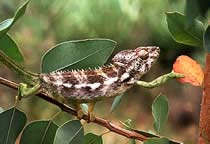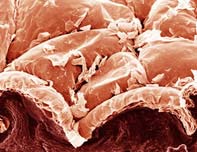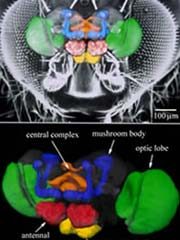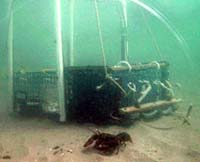Articles and reports from the Life Sciences and chemistry area deal with applied and basic research into modern biology, chemistry and human medicine.
Valuable information can be found on a range of life sciences fields including bacteriology, biochemistry, bionics, bioinformatics, biophysics, biotechnology, genetics, geobotany, human biology, marine biology, microbiology, molecular biology, cellular biology, zoology, bioinorganic chemistry, microchemistry and environmental chemistry.

Bio-Rad Laboratories Inc., multinational manufacturer and distributor of life science research products and clinical diagnostics, has announced the creation of a complete solution for automated BSE (bovine spongiform encephalopathy, or mad cow disease) testing. This highly scalable platform is the first testing system of its kind, providing both screening and confirmation testing capabilities all in one package, and will enable laboratories to reduce staffing costs and increase the speed and security

Reptile history reveals daring escape from Madagascar
Land-lubber chameleons navigated the oceans to spread around the world. Stowed away on tree rafts, the animals were ferried to distant shores, new research suggests 1 .
Chameleons aren’t good swimmers: their mitten-like feet are made to grasp twigs and trees. Yet the intrepid animals charted the seas several times in the past 26 million years, say Chris Raxworthy of the American Museum of Natural History i

The mealybug Phenacoccus herreni feeds on cassava plant sap, inducing shrivelling. It causes extensive damage in cassava growing areas in South America. However, it can be parasitized by two wasps, Acerophagus coccois and Aenasius vexans which act out a ritual to recognize and select the individuals they are going to parasitize. A wasp moves from one side to the other of a potential victim, investigating it by palpation with their antennae. Once this “drumming and turning” procedure completed, the wa

Our skin takes its oxygen straight from the air.
The James Bond movie Goldfinger spawned the urban myth that a person can suffocate if air cannot reach their skin. But the plot contains a grain of truth, new research reveals – our skin gets its oxygen from the atmosphere, not the blood.
Air supplies the top 0.25-0.4 mm of the skin with oxygen, dermatologist Markus Stücker of the Ruhr-University in Bochum, Germany, and his colleagues have found. This is almost 10 times

Average insect brain should help spot defects and their causes.
Two hair’s breadths long and five across – that’s the average capacity of a fly’s brain, German researchers have calculated. They hope to set a benchmark for crania by which oddballs can be judged.
Although it is a creature of little brain, the fruit fly ( Drosophila ) is popular with geneticists. Researchers often study flies that lack a particular gene, looking for flaws that might hint at

Underwater video reveals lobsters behaving badly.
A lobster-pot is more like a Wild West saloon than a cunningly laid snare. Lobsters show up for food and a fight, and only the unlucky few get reeled in, underwater video footage is revealing.
Camera recordings show that lobster traps catch a mere 6% of the animals that enter them. The result suggests that lobsters’ rowdy behaviour could be confusing attempts to count and size them, and so to manage the fishery 1